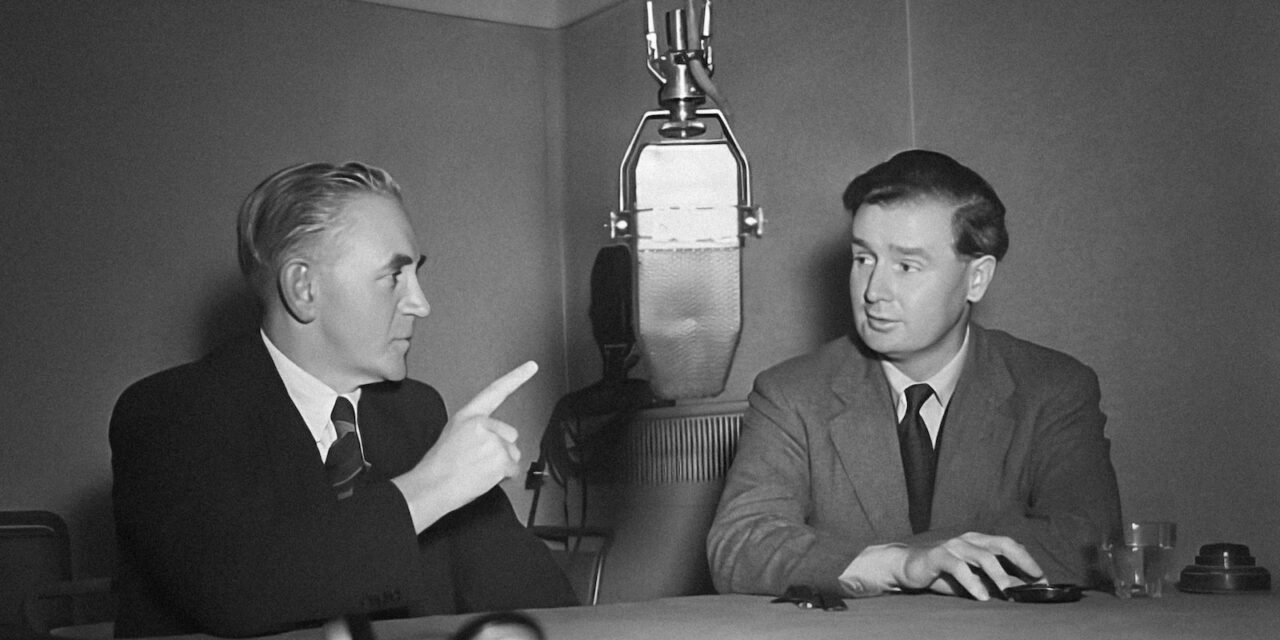Tracing Linguistic Roots: Unveiling Ancestral Languages
Our ancestral heritage is a tapestry woven with threads of culture, history, and language. Just as each thread contributes to the richness of the whole, so do the languages spoken by our forebears shape the tapestry of our identity. Tracing back through the annals of time, we uncover not just names and dates, but a profound connection to our linguistic heritage—a key that unlocks insights into the lives of those who came before us.
The Importance of Ancestral Languages in Understanding Heritage
Language is a mirror that reflects the soul of a community, capturing its values, traditions, and collective experiences. For those of us delving into the labyrinthine corridors of family history and genealogy, understanding our ancestral languages holds a significance that transcends mere words. It’s a journey into the heart of our past, offering a deeper understanding of our roots and a context for the lives our ancestors led.
Imagine listening to the same words spoken by your great-great-grandparents, envisioning the world through their eyes as you decipher their thoughts and emotions. Ancestral languages carry within them the echoes of laughter, tales of hardship, and the wisdom passed down through generations. By unraveling these linguistic threads, we pave the way to preserve not just the languages themselves, but the essence of our heritage.
Methods for Identifying Ancestral Languages
Historical Documents: Old letters, diaries, and official records can yield a treasure trove of linguistic insights. By studying the language used in these documents, we can identify patterns, phrases, and linguistic nuances that bridge the gap between the past and present.
Oral Traditions: Conversations with older family members can unveil oral traditions that have been passed down through the ages. These verbal artifacts contain linguistic clues that resonate with the voices of our ancestors, linking us to stories that might otherwise fade into oblivion.
Migration Patterns: The movement of our ancestors across lands has left an indelible mark on their languages. By mapping migration patterns and cross-referencing them with historical records, we can decipher how languages evolved and interacted with other dialects over time.
Cultural Context: The broader cultural context can shed light on the languages spoken by our ancestors. Exploring art, literature, and religious texts of their time can provide context for the languages they used in different aspects of their lives.
DNA and Linguistic Heritage: Recent advances in DNA analysis have enabled researchers to trace linguistic heritage through genetic markers. While not a direct method of language identification, DNA can offer clues about the regions and populations from which our ancestors originated.
Dialects as Cultural Signposts: Exploring Regional Variation
Imagine a world where words paint pictures of landscapes, where accents carry the echoes of rolling hills and bustling cities. Dialects, those intricate variations of language that pepper our world, are more than mere linguistic quirks—they are living markers of culture, history, and geography. In the tapestry of family history and genealogy, these dialects serve as vivid signposts, guiding us on a journey through time and place.
The Palette of Dialects and Regional Diversity
Dialects are a testament to the rich diversity of human expression, each one capturing the essence of a particular region’s identity. From the lilting cadence of a Southern drawl to the clipped consonants of a New York accent, every dialect is a symphony of history and culture. Within the boundaries of a single language, we find a myriad of linguistic landscapes, shaped by the ebb and flow of people, trade, and migration.
Unearthing Ancestral Origins through Dialects
Delving into the realm of family history and genealogy, the study of regional dialects takes on a profound significance. Like geographers tracing the contours of a landmass, we linguistically map the migration paths of our ancestors. Regional dialects are a linguistic time machine, allowing us to peer into the past and discover the paths our forebears traversed.
By analyzing the unique linguistic markers of a particular dialect, we uncover the hidden story of our ancestors’ geographical origins. A distinctive turn of phrase, a peculiar pronunciation, or a local idiom can provide valuable clues about where our family members once called home. These linguistic breadcrumbs guide us to the heart of their journeys, revealing the distances they traveled and the landscapes they inhabited.
Dialects: Bridges to the Past
Studying regional dialects is akin to opening a window into the worlds of our ancestors. It allows us to hear their voices as they spoke with friends, negotiated with merchants, and shared stories with family. Through the lens of dialect, we can discern not just the words they used, but also the cultural norms and traditions that shaped their lives.
Dialects serve as bridges to the past, connecting us to the lived experiences of those who came before us. The words they chose to use, the accents they carried, and the expressions they favored are woven into the fabric of our family narratives. These linguistic nuances reflect the values and experiences of entire communities, providing context that enriches our understanding of the past.
Preserving the Melodies of Heritage
As we explore the regional variations of language, we also honor the enduring melodies of heritage. In tracing the footsteps of our ancestors through the echoes of their dialects, we safeguard a piece of their legacy for future generations. Just as the landscapes they inhabited have evolved, so too have the dialects they spoke. By understanding and preserving these linguistic nuances, we ensure that their stories continue to resonate in the tapestry of time.
Linguistic Evolution Across Generations: Ancestral Language Shift
Languages are living organisms, ever-changing and adapting to the currents of time. Just as a river reshapes the landscape over centuries, the flow of generations shapes the contours of language. The story of linguistic heritage is not one of static preservation, but a dynamic evolution that mirrors the shifting tides of history. As we explore the journey of language across generations, we uncover the fascinating phenomenon of ancestral language shift.
A Tale of Change and Continuity
The linguistic heritage we inherit from our ancestors is a complex mosaic, woven with threads of dialects, expressions, and intonations. Yet, as time advances, this mosaic undergoes a subtle transformation—a phenomenon known as language shift. Language shift occurs when speakers gradually transition from using one language to another, often due to various external and internal factors.
The Influence of Migration
Migration, like a powerful wind, can carry language across vast distances and intermingle it with new sounds and expressions. As families move from one region to another, their ancestral language can be influenced by the dominant language of the new environment. Over generations, this exposure leads to the gradual erosion of the original language, as words and structures from the dominant language become integrated into daily speech.
Societal Changes and Language Shift
Societal changes are catalysts for language transformation. Urbanization, globalization, and shifts in economic structures alter the way people communicate and interact. The language spoken at home might differ from the language used in public spheres, leading to a divergence between generations. The younger generation, exposed to the dominant language in school and media, may adopt it as their primary means of communication, resulting in a gap between their linguistic heritage and that of their ancestors.
Education and Cultural Identity
Education acts as a bridge between the past and the present, influencing language choices and shifts. In pursuit of economic opportunities and social integration, families often prioritize teaching their children the dominant language. This can create a generational gap in linguistic proficiency, with younger family members becoming more proficient in the dominant language at the expense of the ancestral one. The desire for upward mobility and cultural assimilation can inadvertently contribute to the fading of ancestral languages.
Impacts on Familial Linguistic Heritage
Language shift is a phenomenon that shapes not only individual identities but also familial connections to the past. As ancestral languages gradually yield to the pressures of modernity, the linguistic bonds that once tied generations together can weaken. While the reasons for language shift are often rooted in practicality and societal adaptation, the consequences are not only linguistic—they extend to cultural and emotional dimensions.
As we navigate the intricacies of language evolution across generations, it’s important to recognize that language shift is not a sign of neglect or abandonment of heritage. It’s a reflection of the complexities of human experience and the ever-changing nature of societies. The shifts that occur remind us of the resilience of language and the ways in which it adapts to ensure its survival.
Recording and Analyzing Oral Histories: Tips for Families
Choose the Right Setting: Create a comfortable and relaxed setting for recording conversations. Familiar surroundings can help participants feel at ease and encourage them to share more freely.
Prepare Thoughtful Questions: Craft open-ended questions that prompt storytelling. Ask about childhood memories, family traditions, and experiences from different life stages. These prompts encourage deeper exploration of linguistic nuances.
Capture Diverse Perspectives: Speak to different generations within your family. Elders may recall older phrases and expressions, while younger members may bring a modern twist to the conversation.
Use Technology Wisely: Utilize recording devices, smartphones, or digital recorders to capture conversations. Ensure good audio quality to preserve the nuances of speech.
Document Non-Verbal Cues: Pay attention to non-verbal cues such as laughter, pauses, and emotions. These elements add depth to the recorded stories and offer insights into the feelings associated with particular words or phrases.
Transcribe and Analyze: Transcribe the recorded conversations and analyze the linguistic elements. Note unique words, idioms, pronunciations, and grammatical structures that might have evolved over time.
Compare Across Generations: If possible, compare oral histories from different generations. Observe how language has shifted and how certain linguistic markers have been passed down or transformed.
Celebrate the Uniqueness: Embrace the uniqueness of your family’s linguistic heritage. Don’t be afraid to celebrate and preserve colloquialisms, even if they differ from standard language norms.
Language in Genealogical Research: Utilizing Linguistic Clues
In the labyrinth of genealogical research, where documents and dates create the foundation of ancestral narratives, it’s often the subtleties of language that breathe life into the past. Language is a vessel that carries stories, emotions, and identities across time, offering a unique lens through which we can uncover the mysteries of our lineage. By harnessing the power of linguistic clues within historical documents, letters, and diaries, we gain a richer understanding of our ancestors and forge connections that bridge the gaps of time.
Linguistic Clues: Unveiling Context and Connections
Language is more than just words—it’s a mirror reflecting the culture, society, and personal experiences of its speakers. As we sift through historical records, we encounter linguistic clues that can unlock a treasure trove of insights:
Vocabulary and Idioms: The words our ancestors chose reveal the language landscape of their time. Uncommon vocabulary and regional idioms can point to their geographical origins and cultural affiliations.
Expressions of Affection: Letters and diaries often bear the marks of personal sentiment. The way affection is expressed can tell us about family dynamics, societal norms, and even the emotional ties that bound our ancestors.
Occupational Jargon: The professional language used by ancestors in their correspondence can provide insights into their occupations and social status. Understanding the specialized terms they used can illuminate their roles within their communities.
Language Shift and Adaptation: Over generations, language can evolve or be adapted to new environments. Analyzing how language has changed within the family tree can reveal patterns of migration and assimilation.
Peering into the Past: How to Analyze Linguistic Clues
Transcription and Translation: Transcribe historical documents, letters, and diaries accurately. If they are written in languages unfamiliar to you, seek translation assistance to fully comprehend the content.
Note Unusual Vocabulary: Highlight unfamiliar words or phrases and investigate their meanings. Cross-reference with historical dictionaries to understand their context.
Identify Dialectal Markers: Regional dialects carry a sense of place. Note any linguistic markers that might indicate the geographical origins of your ancestors.
Observe Address Forms: The ways ancestors addressed each other in letters can provide clues about family relationships and social hierarchies.
Contextualize Historical Events: Language can change during times of upheaval or change. Consider the historical context in which documents were written to interpret the language accurately.
Reviving Ancestral Languages: Modern Applications and Cultural Revitalization
In the ever-evolving tapestry of cultural heritage, ancestral languages stand as threads that bridge generations and illuminate the paths our forebears once trod. But as time marches forward, these linguistic gems often find themselves on the precipice of fading into history. Yet, a quiet revolution is underway—an inspiring movement to revive and rejuvenate ancestral languages within the modern world. Through innovative initiatives, language revitalization programs, and the power of digital tools, individuals are reclaiming their linguistic heritage and breathing new life into the voices of the past.
Initiatives: Breathing Life into Dormant Voices
Language Classes and Workshops: Community-based language classes and workshops provide a platform for individuals to learn and practice ancestral languages. Elders become language teachers, passing down their knowledge to eager learners who, in turn, become the torchbearers of the linguistic revival.
Cultural Events and Celebrations: Cultural festivals, storytelling events, and language immersion camps celebrate ancestral languages in vibrant and interactive ways. These gatherings foster a sense of pride and belonging, encouraging individuals to embrace their linguistic roots.
Interdisciplinary Collaborations: Language revitalization benefits from interdisciplinary collaborations. Linguists, educators, historians, and technology experts join forces to develop comprehensive strategies for preserving and teaching ancestral languages.
Language Revitalization Programs: Empowering the Future
Digital Resources: Online platforms host digital resources, such as dictionaries, grammar guides, and audio recordings, enabling learners to access language materials from anywhere in the world.
Language Apps: Language-learning apps offer interactive lessons, quizzes, and practice exercises tailored to various proficiency levels. These apps merge traditional teaching methods with modern technology.
Storytelling and Media: Incorporating ancestral languages into literature, films, music, and other media helps infuse them into contemporary culture, making them relevant to younger generations.
The Digital Renaissance: Empowering Individuals
Online Communities: Social media groups and forums connect language enthusiasts, fostering a sense of camaraderie and support among those passionate about ancestral languages.
Virtual Language Exchange: Digital platforms enable speakers of different ancestral languages to connect and practice together, transcending geographical boundaries.
Recording and Archiving: Digital tools facilitate the recording and archiving of native speakers’ voices, preserving their linguistic nuances for posterity.
The Legacy of Resilience and Renewal
The efforts to revive ancestral languages are a testament to the enduring resilience of human cultures. By breathing new life into these linguistic treasures, individuals not only honor their past but also lay the foundation for a more culturally diverse and interconnected future. In a world where modernization can sometimes overshadow tradition, the revival of ancestral languages is a profound reminder that the voices of the past deserve a place in the symphony of contemporary life.
As we champion language revitalization, we pave a path for future generations to connect with their roots, amplifying the whispers of ancestors and weaving their voices into the fabric of modern identity. Each step taken to reclaim an ancestral language is an affirmation that the story of cultural heritage is far from over—it’s a living narrative that continues to unfold through the power of words.
Image Source:
- Photo by Llyfrgell Genedlaethol Cymru / The National Library of Wales: instant images





